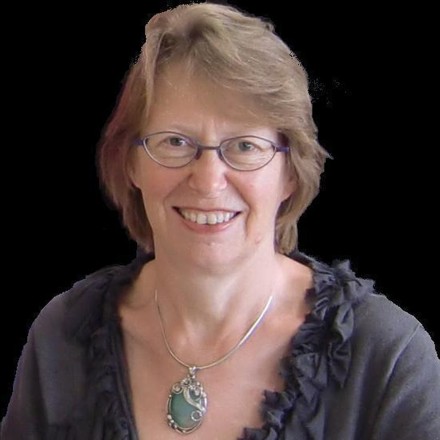
An overarching theme of occupational science is grappling with what the concept of occupation really means. Discussions circle around key concepts – people's possibilities and capability to engage in occupation, balance, routines, the things that shape participation – and what might or might not be considered occupation. Informing those discussions, ways and means of uncovering, measuring and influencing occupation are proposed.
This issue of the Journal of Occupational Science exemplifies those concerns. It opens with four articles that bring a critical perspective into play. Addressing the complexities of promoting occupational justice, Bailliard (2015) presents Sen's capability approach as a philosophically sound basis for justice work. By drawing on Sen's work to deepen our understandings of justice, occupational scientists attempting to help others will be less likely to impose their world view onto others and better prepared for the pursuit of justice through education and by politicising everyday occupation. Following up on those ideas, Opland Stenersen, Laliberte Rudman, and Raanaas (2015) politicise education in their examination of the ways immigrant children's educational performance is presented in Norwegian newspapers, which marginalises them as deficient and best avoided. Taking that critical perspective further, Farias and Laliberte Rudman (2015) review how critical perspectives are being taken up by occupational scientists, and Aldrich and Laliberte Rudman (2015) discuss how situational analysis, a visual approach to data analysis, can be used to foster critical occupational science.
In the pursuit of enhanced understandings of occupation, other researchers and scholars are also exploring visual perspectives and methods of data collection and analysis. Hart and Heatwole (2015) used observation of older adults’ participation in a shopping mall, supplemented with interviews and document analysis, to reveal how their alternate uses of the mall environment were threatened by mall managers’ intent to redevelop and rebrand the shopping complex. McCloy, White, Bunting, and Forwell (2015) employed a visual research method, photo-elicitation, to explore children's perspectives of family routines. Their work is supported by Bukhave and Huniche's (2015) assertion, based on their own experience as researchers, that photo-interviewing elicits a greater depth of reflection on everyday life than conventional interviewing techniques.
Completing this issue, Eakman (2015) furthers his exploration of the meaning of occupation by investigating the relationship of life balance and the meaning people derive from their everyday occupations. As predicted, university students experiencing imbalance reported lower levels of occupational meaning and well-being, compared to those reporting higher well-being. Finally, Wasmuth, Brandon-Friedman, and Olesek (2015) extend previous discussions of whether addiction is an occupation, revealing new insights into how veterans experience addiction as an occupation in which they are initiated, increasingly engage, and incorporate into their identity, before reaching a point where they experience discord and defeat, and replace their addictions by finding alternate occupations.
ORCID
Clare Hocking http://orcid.org/0000-0003-0364-5157
REFERENCES
- Aldrich, R., & Laliberte Rudman, D. (2016). Situational analysis: A visual analytic approach that unpacks the complexity of occupation. Journal of Occupational Science, 23(1), 51–66. doi:10.1080/14427591.2015.1045014
- Bailliard, A. (2016). Justice, difference, and the capability to function. Journal of Occupational Science, 23(1), 3–16. doi:10.1080/14427591.2014.957886
- Bukhave, E. B., & Huniche, L. (2016). Photo-interviewing to explore everyday occupation: Benefits and issues. Journal of Occupational Science, 23(1), 96–107. doi:10.1080/14427591.2015.1070742
- Eakman, A. M. (2016). A subjectively-based definition of life balance using personal meaning in occupation. Journal of Occupational Science, 23(1), 108–127. doi:10.1080/14427591.2014.955603
- Farias, L., & Laliberte Rudman, D. (2016). A critical interpretive synthesis of the uptake of critical perspectives in occupational science. Journal of Occupational Science, 23(1), 33–50. doi:10.1080/14427591.2014.989893
- Hart, E. C., & Heatwole Shank, K. (2016). Participating at the mall: Possibilities and tensions that shape older adults’ occupations. Journal of Occupational Science, 23(1), 67–81. doi:10.1080/14427591.2015.1020851
- McCloy, L., White, S., Bunting, K. L., & Forwell, S. (2016). Photo elicitation interviewing to capture children's perspectives on family routines. Journal of Occupational Science, 23(1), 82–95. doi:10.1080/14427591.2014.986666
- Opland Stenersen, A., Laliberte Rudman, D., & Raanaas, R. K. (2016). Shaping occupational possibilities for Norwegian immigrant children: A critical discourse analysis. Journal of Occupational Science, 23(1), 17–32. doi:10.1080/14427591.2015.1070783
- Wasmuth, S., Brandon-Friedman, R. A., & Olesek, K. (2016). A grounded theory of veterans’ experiences of addiction-as-occupation. Journal of Occupational Science, 23(1), 128–141. doi:10.1080/14427591.2015.1070782
